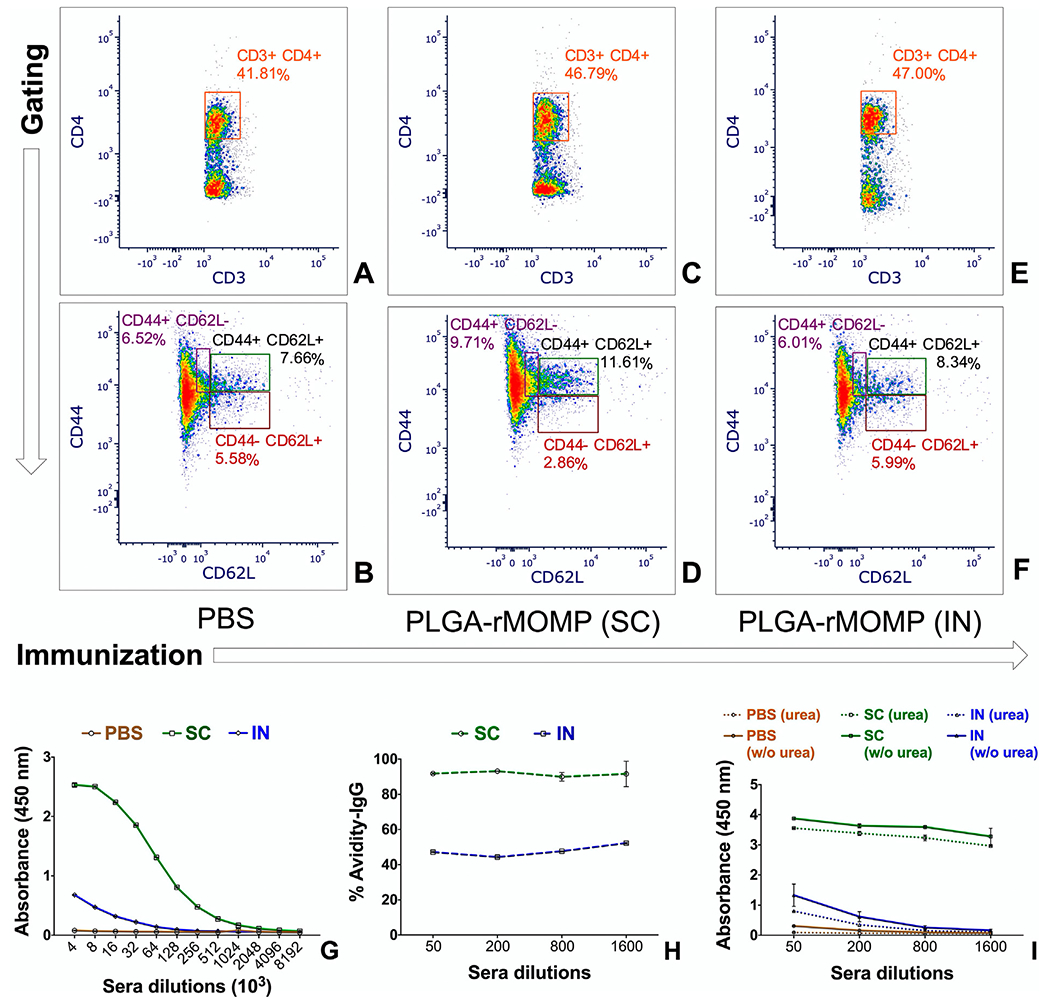Figure 6.

Chlamydia-specific memory and effector T-cells and antibody responses. Mice were immunized with 50 μg of PLGA-rMOMP (subcutaneous or intranasal) three times at two-week intervals and sacrificed two-weeks after the third immunization. Splenocytes were isolated and stained with fluorochrome-conjugated antibodies; anti-CD3-APC-Cy7, anti-CD4-PerCP-Cy5.5, anti-CD62L-APC, and anti-CD44-PE. Stained splenocytes were subjected to flow cytometry analysis by gating on CD3+ cells to quantify CD3+CD4+ derived memory (CD44+CD62L+) and effector (CD44+CD62L−) phenotypes of T-cells for the PBS (A, B), subcutaneous (SC) PLGA-rMOMP (C, D) and intranasal (IN) PLGA-rMOMP (E, F) immunized groups. Sera collected and pooled per group of mice were diluted at a two-fold serial dilution to determine the end-point rMOMP-specific IgG antibody titers via ELISA (G). Avidity index of rMOMP-specific IgG antibodies was determined at lower sera dilutions using ELISA. Percent (%) avidity index (H); avidity absorbance values (I). Sera samples were run in triplicates, and experiments were repeated at least three times.
